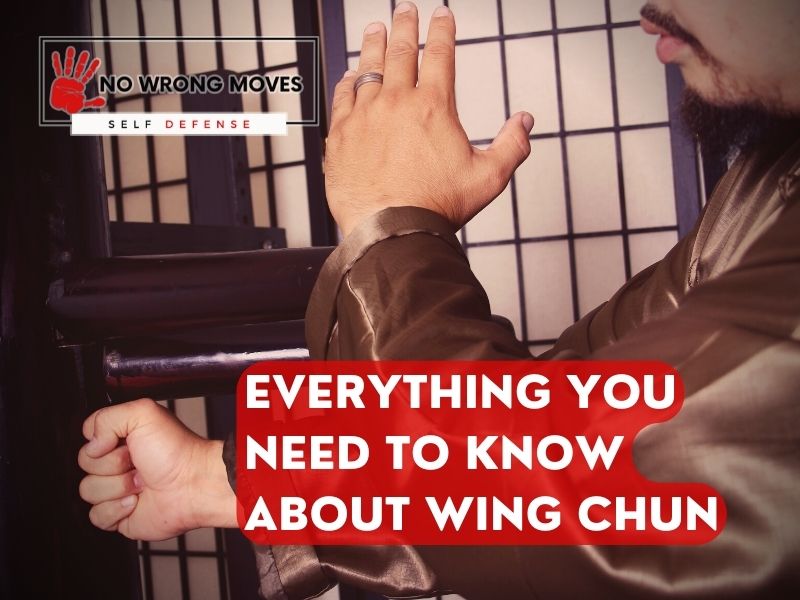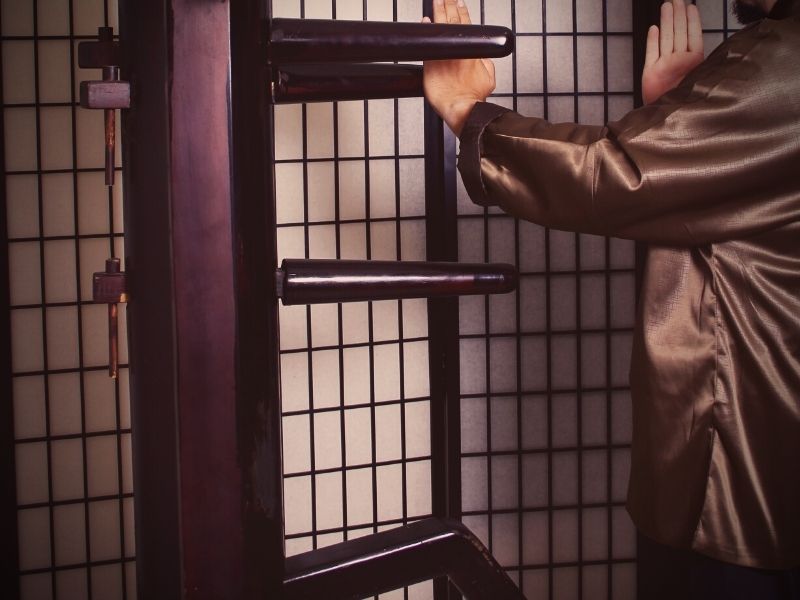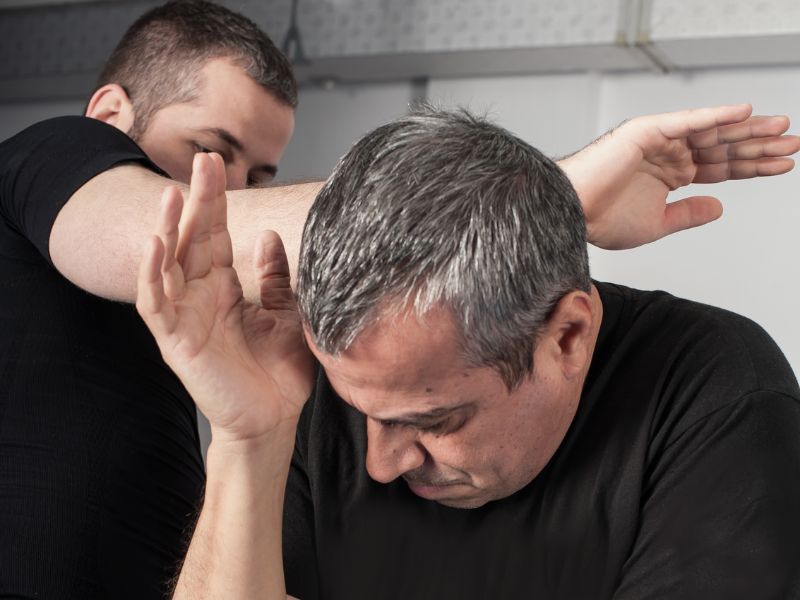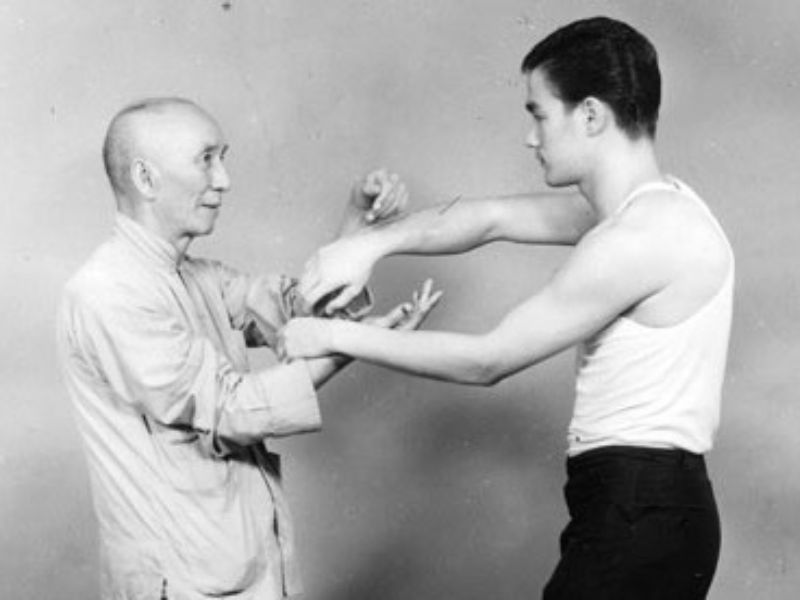
- What is This Martial Art? Everything You Need To Know About Wing Chun
- Where Does Wing Chun Come From? What’s The Story?
- Benefits of Wing Chun
- How to get started in Wing Chun
- What To Expect In Your First Wing Chun Class
- Different Wing Chun Ranks And Levels
- The Importance of A Good Wing Chun Instructor
- Some Movies With Wing Chun
- The Wrap-Up
So you want to know more about Wing Chun? Eager to learn about it before you actually hop into it? Trust me, you've made the right call. There are lots of things this wonderful martial art can offer you, and you'd be wise to try and pick these benefits up for yourself.
Or maybe not! Maybe you just have a passing interest in the martial art. Maybe you're just curious to figure out more about it. If you are, then that's cool too! And I'd be glad to help you out here.
In this post, I'll tell you everything you need to know about Wing Chun, focusing on the following;
- What Wing Chun is;
- Where Wing Chun comes from;
- The benefits of Wing Chun;
- How to get started in this martial art;
- What to expect for your first Wing Chun class;
- Wing Chun's different ranks and levels;
- The importance of a good Wing Chun instructor;
- Using Wing Chun for self-defense.
And by the end of all this, you'll have everything you need to sate your Wing Chun curiosity. Let's get straight into it!
What is This Martial Art? Everything You Need To Know About Wing Chun

Wing Chun is a Chinese martial art that was developed in the southern Shaolin temple over 300 years ago. Its founder, Ng Mui, was a master of Shaolin Kung Fu and one of the few survivors of the destruction of the temple by the Qing Dynasty.
She passed her knowledge on to her student, Yim Wing Chun, who gave the art its name.
Wing Chun is known for its direct and efficient movements, as well as its close-quarters techniques. The goal is to defeat an opponent quickly and with minimal effort.
The art emphasizes economy of motion and proper structure, which allows a smaller person to defeat a larger opponent. Wing Chun practitioners use both striking and grappling techniques, but the focus is on striking because it is more practical in a self-defense situation.
Among the most important aspects of Wing Chun is chi sao, or sticking hands. This is a drill in which two partners train their reflexes and sensitivity by pushing against each other's arms.
It is through this drill that Wing Chun practitioners develop their unique ability to feel an opponent's energy and intentions.
Where Does Wing Chun Come From? What’s The Story?
Wing Chun is named after the woman who is believed to have founded it, and learned it from a Buddhist nun named Ng Moy. The full name of Wing Chun Kuen means Wing Chun martial art. Today, most people just refer to the style as Wing Chun.
In the Chinese language, the word 'wing' means humming. The name Wing Chun can be translated as 'Humming a song in the springtime.' It means that a girl with the name should be happy and enjoy life.
Wing Chun Kuen originated from the Southern Shaolin Temple in Fu Jian Province. The Qing Dynasty burned down the temple, but five of the leading monks and a nun managed to escape. The nun, Ng Moy, went to the White Crane Temple where she saw a crane fighting a wild cat.
She noticed that the crane was very calm and seemed to know what it was doing, while the cat was exhausted and ran away. This made her realise that calmness and knowledge are more important than strength in martial arts.
Ng Moy taught Wing Chun martial arts skills to help her overcome a local gang leader who kept harassing her (I could be writing this story in the 21st century, sadly!).
Wing Chun learned specific techniques such as the 'Yee Chi Kim Yeung Ma' (Wing Chun's basic stance) and three-hand forms. She was also taught how to use weapons such as the Baat jam Dao.
Wing Chun Principles And Practise
Some of Wing Chun's principles include maintaining a straight line in one's form, being relaxed yet alert, and striking at an opponent's weaknesses while protecting oneself. These principles can also be applied in daily life to assist with problem-solving and decision-making.
Wing Chun is known for its efficiency and practicality. It involves direct attacks and simultaneous defence, allowing a smaller person to successfully defend against a larger opponent.
This martial art style has continued to evolve through the years, with many different branches and variations existing today.
Wing Chun remains popular among martial arts practitioners worldwide, with famous practitioners including Bruce Lee and Ip Man (whose story was depicted in the 2008 film 'Ip Man'). The style continues to inspire and empower individuals to defend themselves and others.
Benefits of Wing Chun

Wing Chun offers an excellent opportunity to attain and maintain physical fitness. The practice incorporates a range of movements that engage various muscle groups, resulting in improved overall fitness levels.
On top of that, it's a highly effective way to learn self-defense techniques that can be useful even in intense real-life situations.
One of the significant benefits of Wing Chun is the impact it has on flexibility. The movements involved in Wing Chun require extensive stretching, resulting in increased range of motion and flexibility.
This increased flexibility also helps to prevent injuries and soreness during and after training sessions.
Another advantage of Wing Chun is that it enhances balance. Practicing Wing Chun requires constant shifts in weight and footwork, improving balance and stability. Better balance can help to prevent falls and injuries, making it an essential aspect of physical fitness.
Moreover, Wing Chun promotes better breathing and circulation by teaching practitioners to breathe deeply and focus on their breath during movements. This mindfulness practice helps to reduce stress levels, lower blood pressure, and improve overall health.
Lastly, practicing Wing Chun is an excellent way to improve coordination. The movements in Wing Chun require precision and accuracy, leading to better coordination skills. Improved coordination can help in everyday life, including better hand-eye coordination and motor skills.
How to get started in Wing Chun

Getting started with a discipline like this isn't necessarily going to be easy, so we've mapped out a good way for you to get started with the martial art while minimizing the amount of unnecessary stress you'd have to endure.
- Research different Wing Chun schools, then find one that aligns with your goals and beliefs.
- Attend a trial class to see if the school and instructors are a good fit for you.
- Begin learning the basic techniques, principles, and forms of Wing Chun under the guidance of a qualified instructor.
- Practice consistently to improve your technique and understanding of Wing Chun principles.
- Challenge yourself continuously. Attending workshops and seminars, sparring with other practitioners, and seeking new opportunities for growth within the Wing Chun community.
- Watch and study Wing Chun masters to gain inspiration and new insights into the art.
- Approach everything you do in Wing Chun with humility and a willingness to learning.
You'll still face difficulties, of course. Even if you follow everything here, there is no one set path towards success. Everyone has their own unique challenges and will go through their own unique experiences.
What To Expect In Your First Wing Chun Class

In a Wing Chun class, you can expect to learn basic techniques and forms. This includes learning the Yee Chi Kim Yeung Ma stance, as well as hand forms such as the Siu Nim Tao form. You will also likely be taught about Wing Chun principles and how they can be applied in daily life.
In addition to physical techniques, Wing Chun classes often focus on mental training and relaxation exercises. Classes may also involve partner drills or sparring in order to practice techniques in a realistic scenario.
Overall, your first Wing Chun class should introduce you to the foundations of this martial art style and help you improve both physically and mentally.
Different Wing Chun Ranks And Levels

Learning from the right source is important in Kendo, just as it is in anything else. A good teacher will have not only the knowledge of the subject but also the ability to communicate it clearly to the students.
In addition, a good teacher will be able to provide feedback that is both helpful and constructive. Choosing the right Kendo teacher can make all the difference in terms of how quickly and effectively you learn the skills of this martial art.
With so much at stake, it's imperative you take the time to find a teacher who meets your needs and who you feel comfortable learning from.
The Importance of A Good Wing Chun Instructor

Learning from the right source is important in Wing Chun, just as it is in anything else. A good teacher will have not only the knowledge of the subject but also the ability to communicate it clearly to the students.
In addition, a good teacher will be able to provide feedback that is both helpful and constructive. Choosing the right Wing Chun teacher can make all the difference in terms of how quickly and effectively you learn the skills of this martial art.
With so much at stake, it's imperative you take the time to find a teacher who meets your needs and who you feel comfortable learning from.
Some Movies With Wing Chun

These are some of the top movies and shows with Wing Chun in them:
- Ip Man (2008)
- Ip Man 2 (2010)
- Ip Man 3 (2015)
- The Legend Is Born: Ip Man (2010)
- Kung Fu Wing Chun (2011)
- Wing Chun (1994)
- "The Blindspot" episode of TV show "Martial Law" (1998)
And, just in case you wanted to do some more research, here are some notable figures who practice or have practiced Wing Chun.
- Bruce Lee, martial artist and actor
- Ip Man, Wing Chun teacher who trained Bruce Lee
- Leung Jan, Wing Chun teacher who popularized the style in Hong Kong
- Nina Wang, businesswoman and martial arts enthusiast
- Donnie Yen, actor and martial artist known for his role in the Ip Man film series
The Wrap-Up
So! That's about all we've got for Wing Chun. As you've just read, this incredible martial art has tons to offer you.
It's got a rich history waiting for you to discover it and diverse techniques waiting for you to learn them. That's all on top of its excellent psychological benefits, excellent sense of community, opportunity to acquire self-defense skills, and offer for overall improved physical fitness.
So if you're interested in exploring this ancient martial art, I'd highly encourage you to take the first step today. Start your journey towards becoming a Wing Chun practitioner!
You'll need tons of dedication and practice, definitely, but you might find that this amazing martial art can help you achieve more than you ever thought possible.
[author-box-jpx-fitness]
